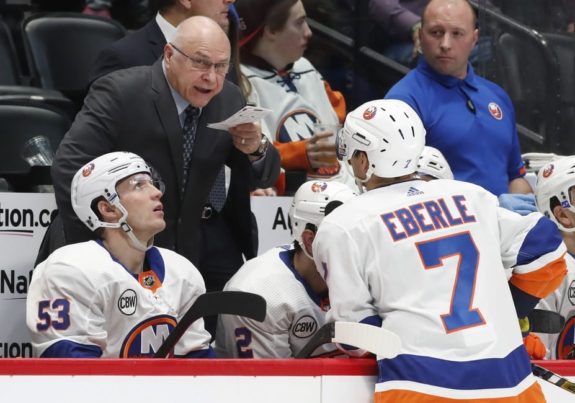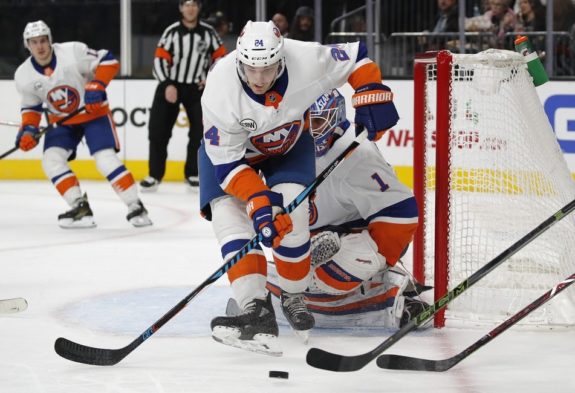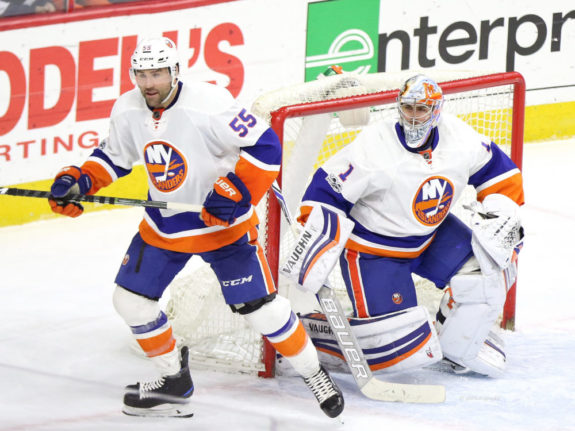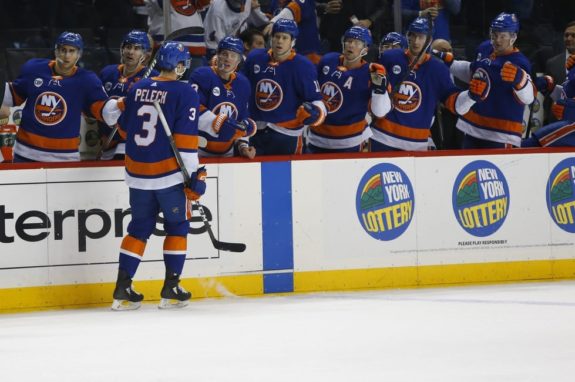Last season was interesting for the New York Islanders. The offense was clicking, scoring 261 goals, which tied them for sixth in the league with the Nashville Predators. The defense was, in a word, bad. They allowed 293 goals at an average rate of 3.57 per game. That’s the fourth-worst goals against and the sixth-worst per game average since the 2004-05 lockout.
This season, with Barry Trotz implementing a more structured defensive system, the Islanders have a league-best 171 goals against with 11 games remaining. What’s impressive is that Trotz has made this improvement (understatement of the year) with many of the same, young players from last season who have worked their way into the Islanders system.

Defensive Prospect Development
Islanders fans who screamed and paid for billboards that said “Snow must go” year-after-year were rightfully annoyed. Outside of back-to-back 100-plus point seasons and one playoff round win, the Islanders could not put together consecutive successful seasons and let 2009 first-round pick John Tavares slip through their fingers.
But, let’s give credit where credit is due. For much of this season, four of the seven defensemen largely utilized by Trotz were former general manager Garth Snow draft picks.
Between 2011 and 2014, Snow drafted Scott Mayfield, Adam Pelech, Ryan Pulock and Devon Toews, respectively. All four played well over 100 games in the American Hockey League for the Bridgeport Sound Tigers with only ‘cups of coffee’ with the Islanders, until recently. Mayfield and Pelech made their way into the lineup in the 2016-17 season, earning full-time jobs, with Pulock arriving the following season.

But the Islanders, and many who follow the team, knew they had burgeoning defenders in their system and chose to be patient. That composure has paid off so far this season and has been accelerated by the presence of structure and professionalism throughout the organization.
Coaching and Match ups
Jack Capuano and Doug Weight had no NHL head coaching experience when they were named bench boss for the Islanders. This isn’t out of the ordinary as many head coaches are recycled. New coaches with little-to-no experience have made an impact over the last few seasons as teams attempt to find an edge in an increasingly-competitive league.
For the Islanders, though, this experiment simply didn’t work. Even with a mix of young players and veterans, the team lacked the ability to shut down other teams.
Insert coach Trotz in what appears to be a serendipitous moment – the Islanders prospects hitting their stride in the NHL just as an experienced, accomplished, defensive-minded coach was stepping in behind the bench. While it wasn’t an instant success, Trotz made an impact very early in the season and it didn’t take long for other teams and members of the media to begin to notice.
Outside of the overall structure that’s helped the Islanders find success this season, what should be noted is how Trotz has utilized his defenders.

In a recent article by The Athletics’s Tyler Dellow, he dove into all 31 teams’ defensive pairings and match-ups through early March. Dellow had this to say about the Islanders:
One of the curious things about the Islanders last year was that they didn’t really have a lot of definition in their defence pairs. That’s changed this year, with Ryan Pulock having become someone who Barry Trotz is using in a match up role. Also of note: Johnny Boychuk’s competition seems to have been taken down a notch. (from ‘Dellow: Matchup data for defencemen from all 31 teams to find out who has earned their coach’s trust,’ The Athletic, 03/11/19)
Other than Pulock, Thomas Hickey is the only defender whose times is split fairly evenly between first, second and bottom-six matchups. Additionally, Hickey, along with Pelech and Nick Leddy, are the only four defenders with more than 30 percent of their time on ice against teams’ top lines. This means that two of the Islanders’ top defensemen in terms of deployment are home-grown players.

Overall, the results show that Trotz is being deliberate about matchups, which, by and large, has worked this season. It also shows that Trotz trusts his back end that, again, is made up a lot of young players who have bought into his system. Other than Toews, no Islander defenseman is playing very many sheltered minutes, whereas many other teams, like the Washington Capitals, Winnipeg Jets and Toronto Maple Leafs, have a very clear divide between their top two pairs and their bottom pair.
The bright Islanders future appears to be led by a solid core of home-grown talent on the back end that has gained the trust of their coach. Can they continue this success in this season’s playoffs? We won’t have to wait much longer to find out.